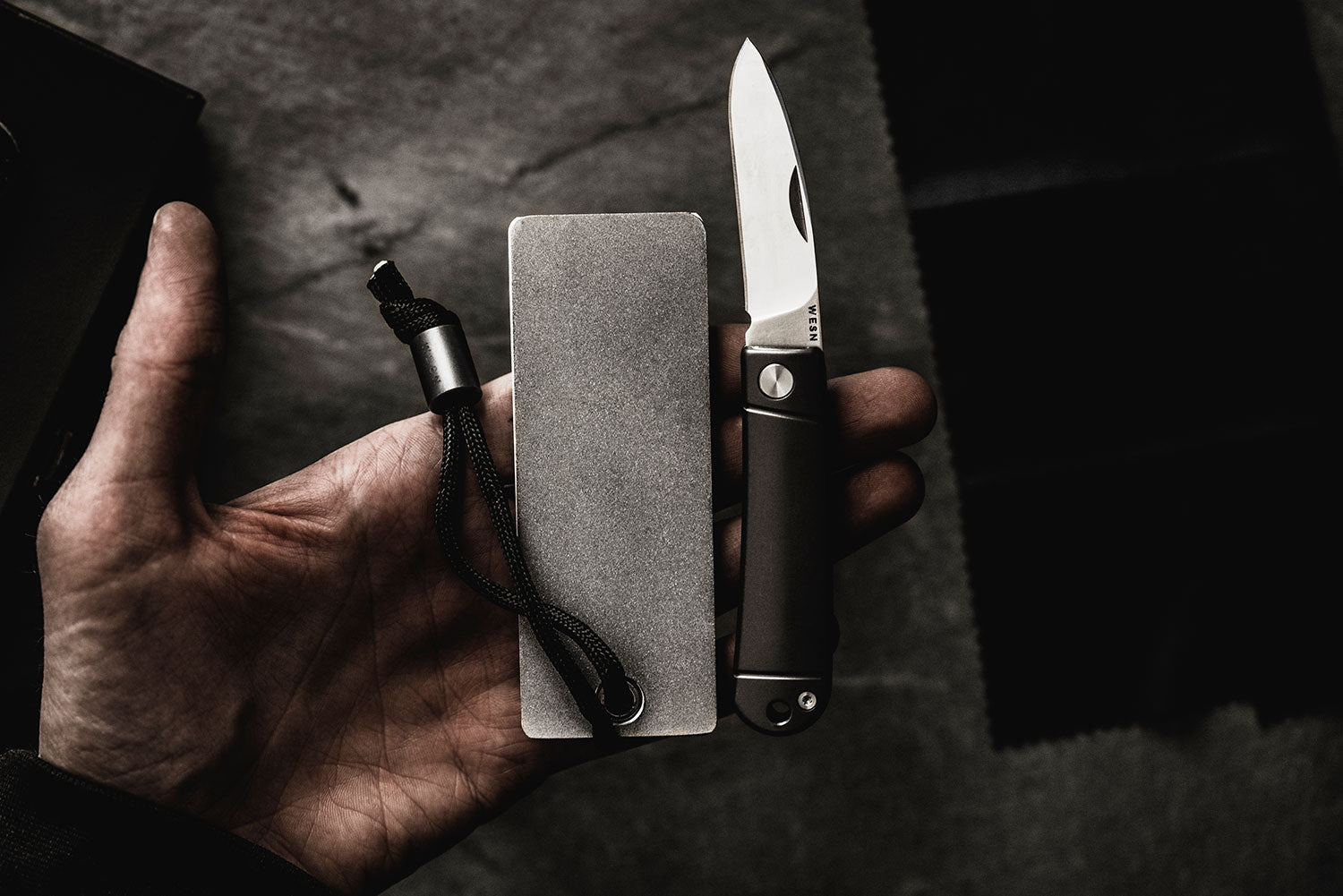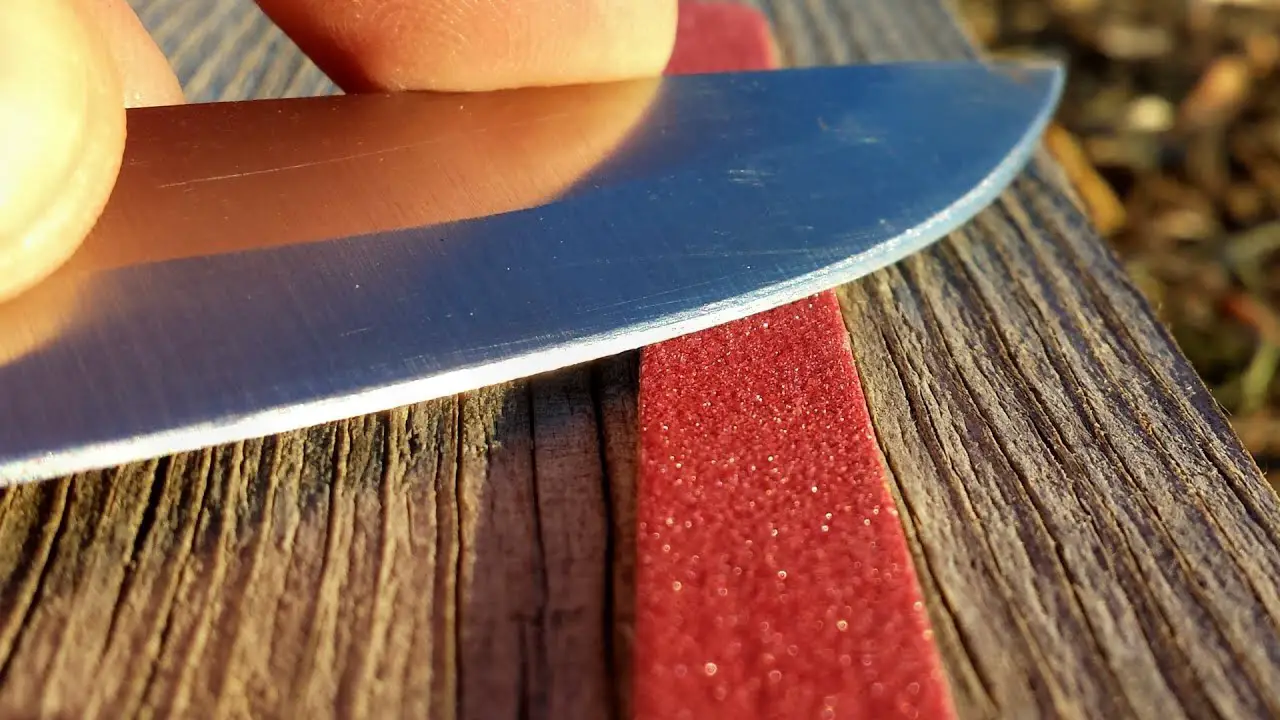Yes, you can sharpen a pocket knife with a knife sharpener. Just make sure you have a sharpening stone and some lubricant to properly sharpen the knife.
The sharpening stone will do most of the work in giving your knife a sharp edge.
The Truth Revealed: Testing The Effectiveness Of Knife Sharpeners
A sharp pocket knife is essential for various tasks, from camping to everyday use. Having a knife sharpener that effectively sharpens your pocket knife is crucial. In this blog post, we will reveal the truth about whether you can sharpen a pocket knife with a knife sharpener.
We will discuss the different types of sharpeners available and test their effectiveness. But first, let’s understand the importance of a sharp pocket knife. A sharp knife ensures clean and precise cuts, making tasks easier and safer. It helps prevent accidents caused by slips and reduces the effort required to cut through materials.
Now, let’s delve into the world of knife sharpeners and explore their effectiveness on pocket knives.
Different Types Of Knife Sharpeners
Knife sharpeners come in various types, each offering different mechanisms and techniques for getting your blade back to its prime condition. Here are some of the most common types of knife sharpeners:
- Whetstones (Sharpening Stones)
- Water Stones: Often made from synthetic materials like aluminum oxide. They need to be soaked in water before use to prevent the blade from overheating and to carry away the metal filings.
- Oil Stones: Made from natural stone materials like Novaculite. They use oil as a lubricant.
- Diamond Stones: Coated with small industrial diamonds. They’re very hard and can sharpen knives quickly.
- Honing Rods (Sharpening Steels)
- They are long, rod-shaped tools (often steel or ceramic) used to realign the edge of a blade. While they do not truly “sharpen” in the sense of removing material from the blade, they help maintain a blade’s sharpness between proper sharpenings.
- Pull-Through Sharpeners (Manual or Electric)
- These are simple devices where you pull the knife blade through a set of fixed sharpening slots. The slots usually have abrasive materials that sharpen the knife as it’s pulled through.
- Manual: Operated by hand, typically have one or more slots with varying coarseness.
- Electric: Operated by an electric motor. They often have spinning abrasive wheels that sharpen the knife when inserted.
- Sanding Systems
- These are guided sharpening systems that use sandpaper or other abrasive films. The angle is usually adjustable, ensuring consistent sharpening. They can provide a very sharp edge and are often used by knife enthusiasts.
- Tungsten Carbide Sharpeners
- Often found in pull-through sharpeners. They are very hard and can quickly put an edge on a very dull knife. However, they may not produce the finest edge compared to other methods.
- Ceramic Sharpeners
- Made from ceramic material, which is hard and offers a fine sharpening edge. They can be found in the form of bench stones, pull-through sharpeners, or honing rods.
- Stropping
- While not a “sharpening” method per se, stropping is used to polish the blade edge, removing any microscopic burrs and aligning the edge. It can be done using a leather strop or even the palm of one’s hand.
- Belt Sharpeners
- These use abrasive belts to sharpen knives. They offer fast sharpening and can handle various blade shapes and sizes. Some advanced systems allow for adjustable sharpening angles.
When choosing a knife sharpener, it’s essential to consider the type of knives you have, how often you use them, and your sharpening skill level. For example, while whetstones offer the most control, they also require more skill and practice. Pull-through sharpeners, on the other hand, are more beginner-friendly but might not provide the same precision edge.

Credit: wesn.com
Best Knife Sharpeners For Pocket Knives
Pocket knives are essential tools for various outdoor activities, but over time, they can become dull. Fortunately, there are knife sharpeners specifically designed for pocket knives that can restore their sharpness. When choosing a pocket knife sharpener, it’s important to consider its features and benefits.
Here are some top recommendations: Precision Adjust Knife Sharpener, Benchmade Guided Field Sharpener, Victorinox Pocket Knife Sharpener, and Work Sharp Guided Field Sharpener. Each of these sharpeners offers unique capabilities to suit different needs. For example, the Precision Adjust Knife Sharpener allows you to fine-tune the sharpening angle, while the Work Sharp Guided Field Sharpener features multiple sharpening materials.
By using these sharpeners, you can easily and effectively sharpen your pocket knife, ensuring it remains a reliable tool for your outdoor adventures.
Tips And Tricks For Sharpening A Pocket Knife
Sharpening a pocket knife with a knife sharpener is definitely possible and can be done effectively with proper technique. To maintain the sharpness of your pocket knife, it’s important to follow a few key tips and tricks. First, make sure to use the correct angle and pressure when sharpening with the knife sharpener.
This will ensure that you remove the right amount of metal and create a sharp edge. Additionally, it’s crucial to avoid common mistakes such as applying too much pressure or not sharpening both sides evenly. By paying attention to these details, you can achieve a razor-sharp edge on your pocket knife and keep it in optimal condition.
Remember to always exercise caution and follow safety guidelines when sharpening your knife.
Step-by-Step Guide to Sharpening
Setting up the workspace:
Before diving in, ensure you have a stable and clutter-free space. Remember, safety first!
Technique for sharpening:
Begin with a 20-degree angle. Glide the blade against the sharpener in smooth strokes, ensuring even sharpening on both sides.
Common Mistakes While Sharpening
We all make mistakes, but here’s how to avoid them:
Not maintaining angle consistency:
Shifting angles while sharpening? That’s a no-no. Consistency is key!
Over-sharpening:
Too much of anything is bad, even with sharpening. Aim for sharp, not a worn-out blade.
Testing Knife Sharpness
Wondering if you’ve achieved the desired sharpness? Let’s test!
Paper test:
Glide your knife through paper. A smooth cut? You’re on track!
Tomato test:
If your knife can slice a tomato without squishing it, give yourself a pat on the back.
Hair test:
Not for the faint-hearted! A sharp knife should be able to shave off a bit of your hair.
Maintaining Your Pocket Knife
Regular honing:
Sharpening is essential, but so is honing. It helps in aligning the blade’s edge.
Proper storage:
Store your pocket knife in a dry place. Moisture is its enemy!
Conclusion
Sharpening a pocket knife with a knife sharpener is not only possible but also highly recommended. Using a high-quality pocket knife sharpener ensures that your knife maintains its sharpness and efficiency for a longer period of time. Whether you choose a manual or electric sharpener, there are various options available to suit your needs.
Additionally, it is important to choose the appropriate sharpening angle for your pocket knife to ensure optimal results. Remember to follow the manufacturer’s instructions and take necessary precautions to avoid any accidents while sharpening. Regular maintenance and proper sharpening techniques will extend the lifespan of your pocket knife, allowing you to enjoy its functionality for years to come.
Invest in a reliable pocket knife sharpener and keep your knife sharp, safe, and ready for any task that comes your way.

This is Kristina, a passionate content writer, copywriter, and bookworm. Always dedicated to providing informative and accurate product reviews for enjoyable shopping. In my free time, I love spending time in nature and with animals and doing yoga.

